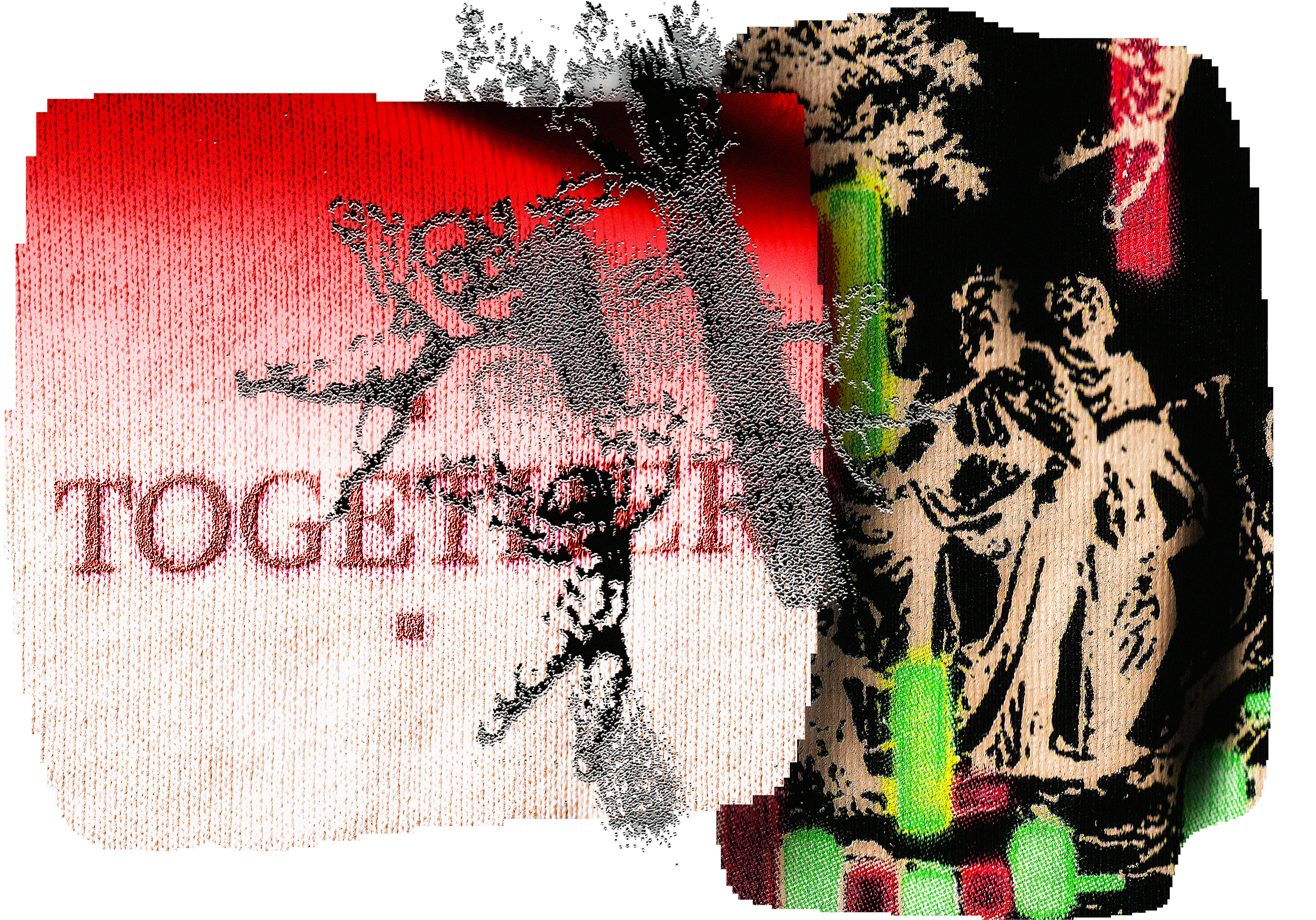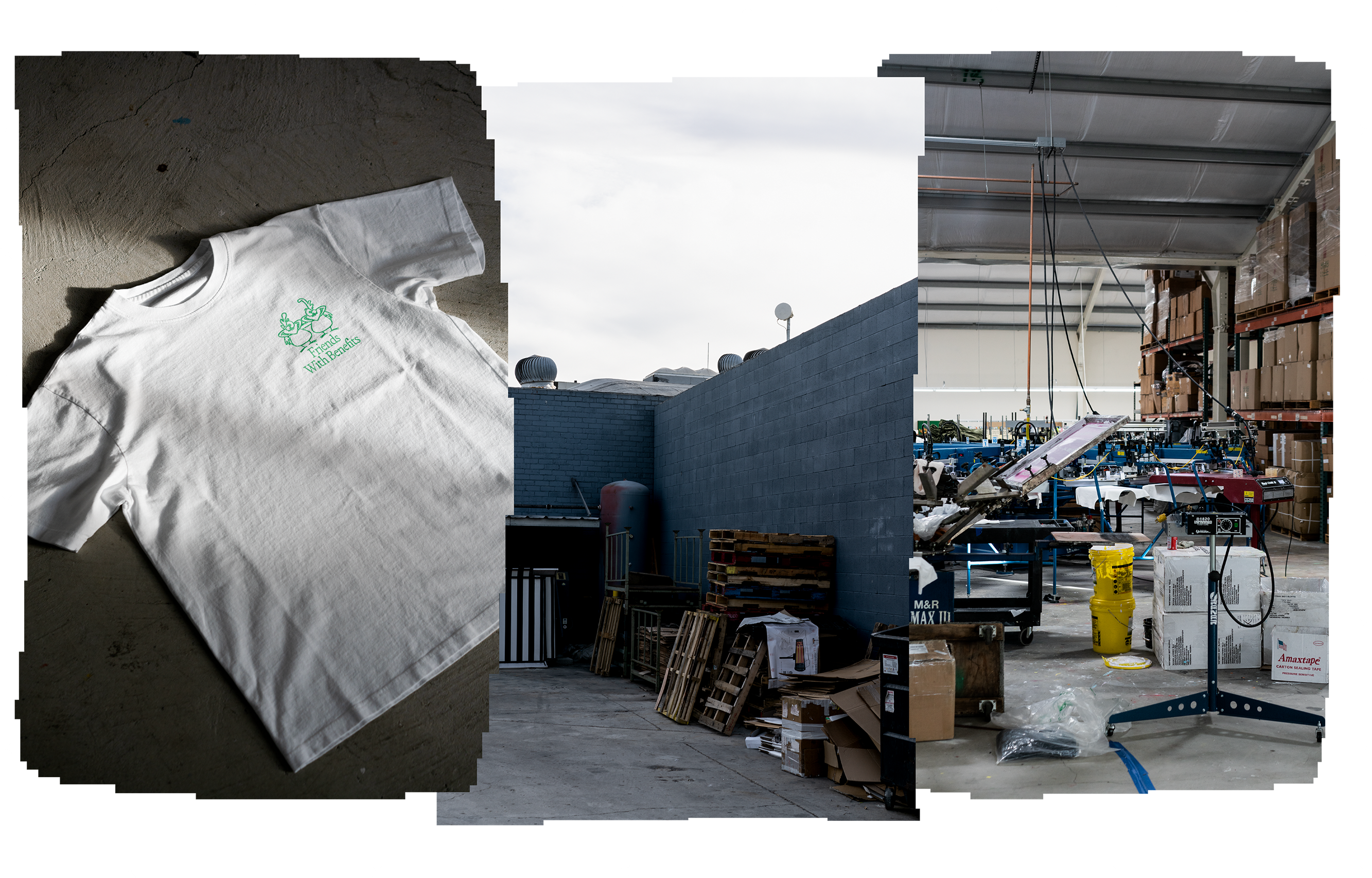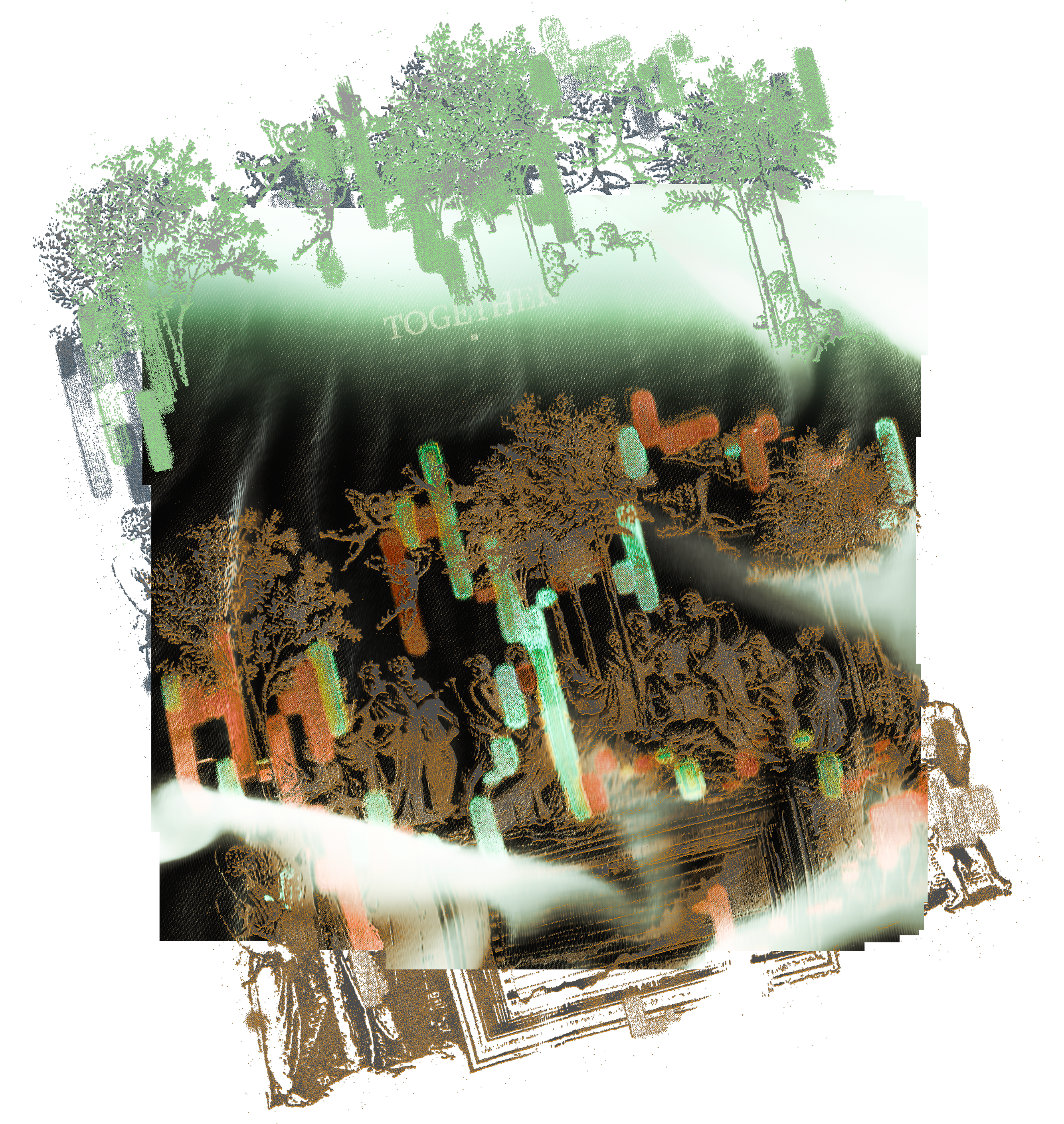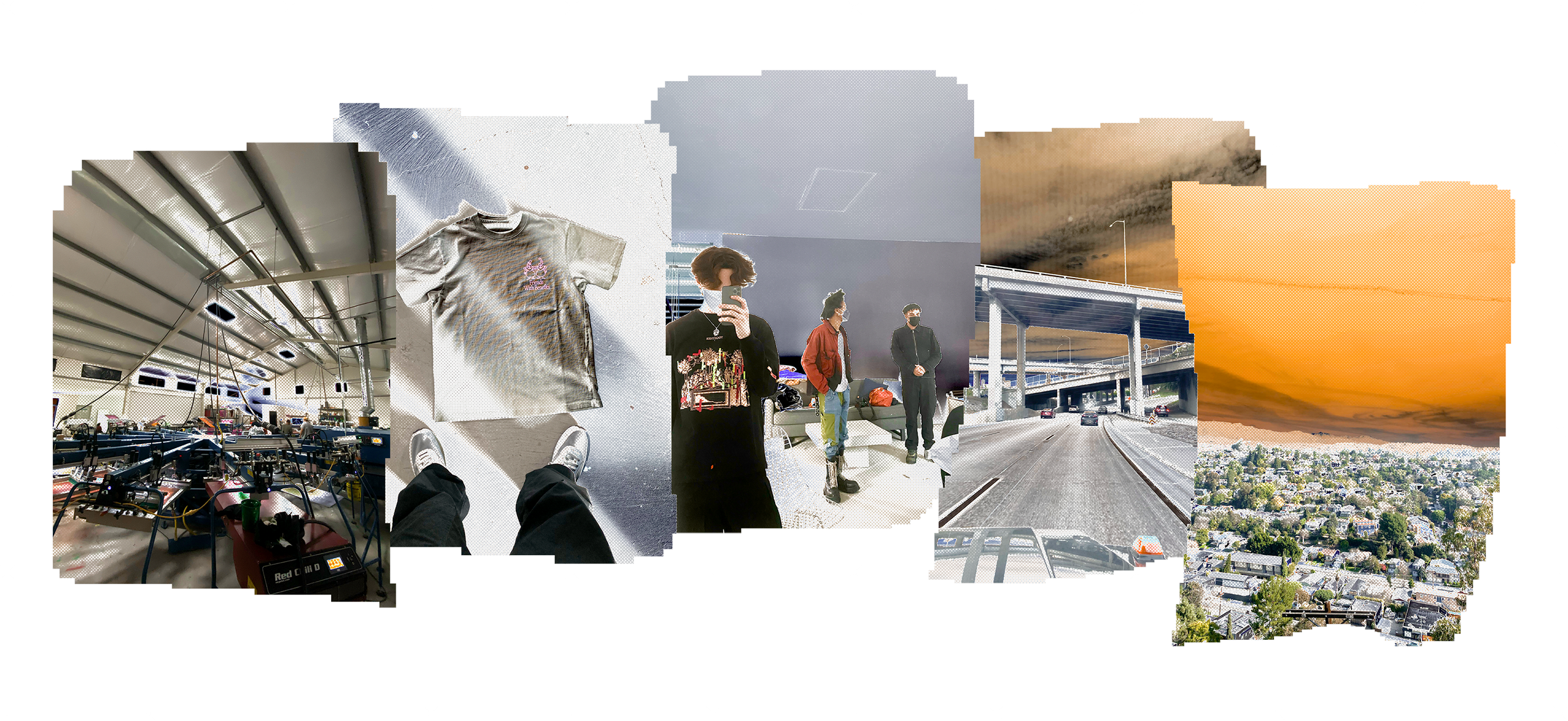- Aleph
- Anna Gat
- Ariel LeBeau
- Austin Robey
- David Blumenstein
- David Ehrlichman
- David Kerr
- Devon Moore
- Dexter Tortoriello
- Drew Coffman
- Drew Millard
- Eileen Isagon Skyers
- FWB Staff
- Gaby Goldberg
- Greg Bresnitz
- Greta Rainbow
- Ian Rogers
- Jessica Klein
- Jose Fernandez da Ponte
- Jose Mejia
- Kelani Nichole
- Kelsie Nabben
- Kevin Munger
- Khalila Douze
- Kinjal Shah
- Kyla Scanlon
- LUKSO
- Lindsay Howard
- Maelstrom
- Marc Moglen
- Marvin Lin
- Mary Carreon
- Matt Newberg
- Mike Pearl
- Mike Sunda (PUSH)
- Moyosore Briggs
- Nicole Froio
- Original Works
- Ruby Justice Thelot
- Ryne Saxe
- Simon Hudson
- Steph Alinsug
- The Blockchain Socialist
- Willa Köerner
- Yana Sosnovskaya
- Yancey Strickler
- iz

Thu Apr 07 2022

Imagine buying the perfect pair of pants. Their hem length and bagginess were debated and voted on by their future wearers. Their fabric was sourced ethically, and you can look up the metadata of where it was milled. They have been minted on the blockchain, so if you resell them, the next buyer knows they’re legit. And instead of the pants pattern belonging to the brand for the rest of its life, it will have a life of its own, moving fluidly between design teams and production houses, with the creators paid equitably at each step. This is what designers Jeremy Karl and Eugene Angelo want decentralized garment design to be.
Karl and Angelo are at the helm of the first merch collection from Friends With Benefits, the DAO that Works In Progress is also a part of. The drop, which includes hoodies, t-shirts, and hats, launches Thursday, April 7. When the two met on the FWB Discord last year, which happened within the first hour of Karl joining, Karl said they identified each other as “people asking the right questions.” Karl has been in the techwear fashion industry for over a decade, with a CV that includes contributions to Louis Vuitton projects, Drake’s debut Nike NOCTA sneaker, and Arc’teryx System_A. Angelo graduated from Central Saint Martin’s last year, and has been art directing for the musician Peggy Gou and running his creative studio ANGELO ® in London. Neither is satisfied with the way the mainstream fashion business works.
“I would walk into meetings with some of these giant sportswear brands and they would literally have half of my Tumblr printed out and put up on boards, and they’re like, ‘We want this,’” Karl says. Ten years ago, he was still in climb-the-ladder mode and happy to have made it inside those conference rooms at all. “I couldn’t see any other options for me getting to do what I wanted, which was to design.”
And he did. But today, Karl is frustrated that his era-defining style Tumblr, TechSpec, was an industry anomaly. Out of countless Web2 style accounts (think: Internet Fame, Mood Mail, and a graveyard of Polyvore profiles) that shaped young consumers’ understanding of “cool” — and filled the pockets of advertisers and platform CEOs — Karl characterizes his archive as “one of the only ones that made it, that got absorbed by the ecosystem to be able to [profit from] our work.” He wants to live in a world where designers can reap the value of their own creativity, and has been thinking about what a system for ethnically acknowledging marketplace influence could look like. His dream: A future where techspec.tumblr.com prototypes are licensable, but the designer is not. (Though you could pay him a consulting fee in ETH).

Karl and Angelo believe the answer lies in blockchain, a technology with the potential to serve as an immutable ledger of pretty much every aspect of the creation process, from brainstorm sessions to shipments — and the people and institutions who help bring each garment to life. “Think of this as 2010 again,” Angelo says, referencing the inception of Instagram and Tumblr and the embrace of e-commerce platforms like Shopify and Big Cartel, which made it possible for independent designers to thrive without representation at department stores or Fashion Week. “That was the last paradigm for fashion in terms of technology — the stage before [Virgil Abloh’s luxury fashion brand] Off-White gets started or the streetwear movement picks up.” Now, Angelo says, fashion is on the precipice of another big shift: “How do we restructure a brand now that the core primitives [of ownership] have changed?”
So far, chatter around blockchain in fashion has largely centered around legacy brands using ledgers of provenance to nip high-street cooptation and Canal Street counterfeits in the bud. Karl and Angelo are more interested in establishing provenance for the sake of profit redistribution, especially for creators who have accrued cultural capital without monetary gain. Ideally, even a photographer who takes an outfit picture that goes viral should be a part of a garment’s story.
“Fashion is typically mythologized as one genius in one room doing it all,” Angelo says. “Actually, it’s extremely collaborative and always has been.” In a recent white paper, Karl lays out his concept of “total design,” in which fashion is no longer a disconnected hierarchy that places artists at the top and factory workers or dropshippers at the bottom. Instead, he likens the future of the industry to the ancient Silk Road trade route and the Silk Road darknet market, operational in its original form from 2011 to 2013. “The open web being built can create the kind of transparent connections that would allow the craftsmen, the makers (sewers, pattern makers, printers, embroiderers) to own the means of production proportionally,” Karl writes.
In other words, this would be Silk Road 3.0: a world where makers at different levels of the production process band together around common goals, and where designers and fashion houses build upon each other’s work. “Instead of a siloed system, [imagine] there’s multiple brands building on top of designs, and then those designs are being forked into different things,” Angelo says. The unsustainable season-by-season overhaul would give way to designers releasing remixes of their creations and those of others, while smart contracts ensure that creators can share in the value their ideas are generating downstream. “It creates a positive-sum, cooperative industry, rather than brands competing with each other to the bottom, which is how fast fashion came about,” Angelo says.

FWB’s first merch line, Together, provided the pair with an opportunity to test some of their ideas. First experiment: a fashion house with decentralized horizontal management. They restructured the production line to some degree, so that Karl, Eugene, and Last Orchid, the embroidery digitizer they brought on for the project, would get a cut of total profits, rather than a one-time fee. (Karl says that their other collaborators, like silkscreeners and seam engineers, “are still trapped under the ‘factory’ umbrella,” though that’s something he is “actively working on front-running.”)
Sales for purchasing physical Together items will be open for a few weeks, and the hoodies and t-shirts will be produced according to the number of orders. This maximizes the profit margin, Karl says, while also ensuring that production practices remain low waste. The designers say they also have plans to mint the artwork that appears on the garments as NFTs, and to make their designs available on the blockchain as a tech pack, a blueprint of the specifications for correctly producing each item. They want to inspire other people to make their own versions of the garments, and envision a “forking” where future designers pay to use elements of the original while acknowledging the copying. “Web3 natives understand that this is a multiplayer creative economy,” Angelo says.
The results of the experiment remain to be seen; Karl and Angelo are waiting to see what forks are made by outside parties, and how factors like scarcity affect the life of a fashion line. But one could argue that collaborative projects like this one could help disrupt the individualistic “artist-as-brand” mentality that has thrived on the centralized web, and present an alternative to an ad-driven economy that encourages designers to dilute their vision to broaden their work’s appeal. In “100 True Fans,” crypto investor Li Jin offers a glimpse of what a human-scale creator economy could look like: She imagines 100 people paying a creator $1,000 a year, motivated by their own self-interest to obtain what the creator (or creative group) can offer them. “The recipe,” she writes, “is to go niche.”

It makes sense that Virgil Abloh, king of collaborations and quotation mark-based patents, had been scheming to build “the design house shaping the metaverse” as a DAO “curating both NFTs and physical artifacts.” In a deck shared posthumously, he wrote out a simple equation: “physical = digital.” That may be confusing for anyone who thinks of fashion exclusively as linens and wools that you can run your hands over, or as a parade of red carpet gowns that celebrities are often paid to wear. But in 2022, you don’t need to leave your house or even have a corporeal form to be a fashion influencer. Why not wear digital clothes that defy the laws of physics if the outfit is ultimately for photos viewed on screens?
Daisy Alioto, co-founder of the NFT-funded entertainment newsletter and media DAO Dirt, counters NFT skepticism by stressing that today’s consumers do experience emotional attachment to digital relics. “We feel attachment to the ephemeral heart that appears in our notifications,” she says. “The reason why people are saying they don’t want to own NFTs is not because they don't see the value of virtual things; it’s that they don’t like what’s out there, and they don’t see themselves reflected in it.”
There’s no denying that Web3 has an aesthetics problem, or at least that its most visible projects do. Computer-generated CryptoPunks and Bored Apes can feel slapdash and corny, optimized for consumption by algorithms over human eyes. “Every metaverse website has the same neon borders, black background, some funky shapes, and 3D things,” Angelo says. “It’s too derived from sci-fi and the symbol of the future, and less concerned with what people actually like and how they feel right now.”
Karl says that when he first encountered Web3, “it wasn’t comfortable for me, because the aesthetics are counter to current culture.” However, he and Angelo agree that it’s a fun position to be in. “I kind of love spaces that aren’t tasteful, because it’s our job [as designers] to make them tasteful,” Angelo says. “The technology can be futuristic, but that doesn't mean the aesthetics have to be. It’s the MAYA principle: Most Advanced Yet Acceptable.”

With its embroidered serif fonts and rich colors, the Together collection looks like it could belong in a bin of psych-rock band tees. What makes the project unique is its attempt to democratize the production process, along with its tongue-in-cheek references to digital life. One graphic references a week in March 2021 when the value of the $FWB token plummeted and more than 800 ETH was drained from the DAO’s liquidity pool after the social token issuer Roll was hacked. Even though the token value fell by more than 90 percent, people stayed. In homage to that collective commitment, the designers remix a 16th-century Raphaelite engraving of Apollo on Parnassus, surrounded by mortal poets and musicians, to include $FWB’s price chart graph; a Creative Commons musing on artist collectives stretching through time. You can buy it on a hoodie or a long-sleeve T, and down the road, likely as an NFT.
As Karl and Angelo see it, it doesn’t really matter whether the expression of an idea is physical or digital. Either way, the object is fundamentally symbolic. Merch has always been less about wearing something than demonstrating support and belonging. I’ve never worn my itchy Gildan t-shirt from the freeform radio station WFMU fund drive, even though I paid $50 for it. But I got my money’s worth when the DJ thanked me on air, and it paid dividends again when my friend sent me a meme referencing women who wear the shirt. As an owner of the object, I am written into the meme and the cultural moment it represents.

In an essay for Dirt, Alioto likens virtual garments to bootlegs. “The fake (sign) may not subsume the real (reference), but it exerts power over the way the original is perceived,” she writes. “Eventually, they almost need each other to stay culturally relevant.” In this way, she argues, “What happens in the metaverse doesn’t stay in the metaverse.”
For the time being, Karl is happy bouncing in and out of it. On his docket is a wish list of collaborations, with the aim of pulling “some of the best designers” into Web3 via Hibiscus DAO, an open-source toolkit for the fashion creator economy he co-founded, with a long-term goal of using blockchain technology to prove that products are being made ethically. Angelo has his sights set on infiltrating consumer hardware technology, which has a very strained sign/signifier relationship — i.e., a hard drive doesn’t look like it has half a billion dollars on it. But to get in this game, you have to learn to sit with the blurry, big-brain ideas, even when it’s uncomfortable.
“A lot of the crypto world has pushed itself into the mainstream too quickly, to the point where no native culture has been able to ferment,” Angelo says. “You can’t attach the current culture to this new one and expect it to work. We want to create something completely new.”


